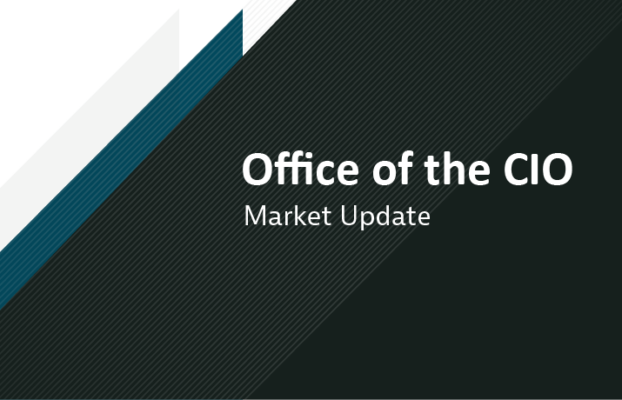The Finish Line Commentaries: October's Behind Us
Author: Danny Popescu | November 1, 2021
Last week we saw the first all-green week since August. Equities rose 1.5% to 2.5% with the major indices approaching or setting new 52-week highs. The Canadian dollar rose along with the price of oil. Oil has doubled in the past year, which is good news for Energy investors, but will increase consumer and producer inflation. Gold which gained last week is still down more than 7% in the past year. The positive performance for stocks and oil was achieved despite the mixed news that was announced.

The performance of the Canadian dollar, gold, oil and North American stocks occurred while economic news was not entirely positive:
• The jobs report delivered at the beginning of October brought positive economic news. 157,000 Canadian jobs were added during September, which soundly beat analyst expectations. The unemployment rate fell to 6.9%, the lowest level since the pandemic began in March of 2020. Companies are still looking to hire more workers, but 400,000 people have not rejoined the workforce. https://www150.statcan.gc.ca/n1/daily-quotidien/211008/dq211008a-eng.htm?HPA=1
• The U.S. added only 194,000 jobs in September, which is the lowest monthly increase in 2021 and well below estimates. Unemployment is down to 4.8%, but the lower rate was mainly driven by less job seekers (labour force participation) than more jobs being added. Also, American workers have increased their wages nearly 5% since last year as labour supply growth lags behind demand. https://www.bls.gov/news.release/empsit.nr0.html
• The International Monetary Fund (IMF) released is “World Economic Outlook” with the headline “Global recovery continues, but the momentum has weakened, and uncertainty has increased”. The slowdown has been attributed in part to supply disruptions in advanced economies and worsening pandemic conditions in developing countries. IMF’s World Economic Outlook
• U.S. consumer inflation rose 5.4% in September. The Federal Reserve has been maintaining that the higher inflation rate situation is temporary. Concern is growing that inflation may not be as transitory as hoped based on recent data from the housing market.
• Expectations to taper Federal Reserve bond purchases, which would increase the cost of long-term borrowing is continuing to grow. The move to taper is being driven by increasing inflation, but also potentially delayed by stalling Gross Domestic Product and employment numbers. Based on the Fed’s prior guidance an increase to the benchmark interest rate is not expected until 2022 or 2023. https://www.federalreserve.gov/monetarypolicy/files/fomcminutes20210922.pdf
• Domestically, Canada’s overall inflation rate for September was 4.4%. The assumption that current inflation is temporary and related directly to the reopening and recovery of economies is beginning to be questioned in Canada as well. When food, shelter and transportation prices rise, 3.9%, 4.8% and 9.1%, respectively, concern also rises that price increases are not transitory. Eventually inflation will pressure central banks to slow price increases by slowing economic growth. https://www.theglobeandmail.com/investing/markets/inside-the-market/article-inflations-return-is-just-in-time-for-halloween/ https://www150.statcan.gc.ca/n1/daily-quotidien/211020/dq211020a-eng.htm?HPA=1
• The effects of the delta variant of the coronavirus has been less than originally predicted. In most developed economies, aside from a few dangerous pockets of infection, high cases-counts and severe illness have been avoided or have peaked.
• The most significant news for the TSX and most Canadian investors was the announcement by the Bank of Canada that their quantitative easing program of bond-buying would be ending due to inflation pressures and jobs growth. Secondarily, the Bank’s forward guidance has an interest rate increase predicted for the middle of 2022, not at the end of next year.
• The Bank of Canada, like the U.S. Federal Reserve, has inflation control and employment maximization as their most important and simultaneous mandates. Bond-buying lowers the long-term borrowing rate for businesses and household and encourages and allows major investments and purchases that contribute to economic recovery. Further reducing the quantitative easing program back to zero reduces overall demand and upward price pressures (inflation). Unfortunately, it also will reduce economic growth that produces jobs. https://www.cbc.ca/news/business/bank-of-canada-decision-1.6226796 https://www.bankofcanada.ca/2021/10/mpr-2021-10-27/
What’s ahead:
Since the Bank of Canada has taken action to reduce economic supports, it may be time for the U.S. Federal Reserve to act. The next U.S. monetary policy announcement occurs on Wednesday, November 3rd following the Federal Open Market Committee meeting. The actions and guidance provided by Jerome Powell, Federal Reserve Chair, could signal the direction that investors should take in the near term.
Powell’s actions will be covered by the media in the U.S. and Canada, and the official announcement can be found after 2 pm Eastern on Wednesday at https://www.federalreserve.gov/monetarypolicy/fomccalendars.html
“I have prepared this commentary to give you my thoughts on various investment alternatives and considerations which may be relevant to your portfolio. This commentary reflects my opinions alone and may not reflect the views of Harbourfront Wealth Management. In expressing these opinions, I bring my best judgment and professional experience from the perspective of someone who surveys a broad range of investments. Therefore, this report should be viewed as a reflection of my informed opinions rather than analyses produced by Harbourfront Wealth Management Inc.”
Disclaimer – This information transmitted is intended to provide general guidance on matters of interest for the personal use of the reader who accepts full responsibility for its use and is not to be considered a definitive analysis of the law and factual situation of any particular individual or entity. As such, it should not be used as a substitute for consultation with a professional accounting, tax, legal or other professional advisor. Laws and regulations are continually changing, and their application and impact can vary widely based on the specific facts involved and will vary based on the particular situation of an individual or entity. Prior to making any decision or taking any action, you should consult with a professional advisor. The information is provided with the understanding that Harbourfront Wealth Management is not herein engaged in rendering legal, accounting, tax or other professional advice. While we have made every attempt to ensure the information contained in this document is reliable, Harbourfront Wealth Management is not responsible for any errors or omissions, or for the results obtained from the use of this information. All information is provided “as is,” with no guarantee of completeness, accuracy, timeliness or as to the outcome to be obtained from the use of this information, and is without warranty of any kind, express or implied. The opinions expressed herein do not necessarily reflect those of Harbourfront Wealth Management Inc. The particulars contained herein were obtained from sources we believe to be reliable but are not guaranteed by us and may be incomplete. The opinions expressed are not to be construed as a solicitation or offer to buy or sell any securities mentioned herein. Harbourfront or any of its connected or related parties may act as financial advisor or fiscal agent for certain companies mentioned herein and may receive remuneration for its services. The comments and information pertaining to any investment products (The Portfolios) sponsored by Willoughby Asset Management are not to be construed as a public offering of securities in any jurisdiction of Canada. The offering of units of The Portfolios is made pursuant to the Offering Memorandum or Simplified Prospectus and only to investors in Canadian jurisdictions. Important information about The Portfolios is contained in the Offering Memorandum or Simplified Prospectus available through Willoughby Asset Management. Commissions, trailing commissions, management fees, performance fees, and expenses all may be associated with investments in The Portfolios. Investments in The Portfolios are not guaranteed, their values change frequently, and past performance may not be repeated. Historical annual compounded total returns including changes in unit value and reinvestment of all distributions do not take into account sales, distribution or optional charges or income taxes payable by any security holder that would have reduced returns. Unit values and investment returns will fluctuate and there is no assurance that The Portfolios can maintain a specific net asset value. Harbourfront Wealth Management Inc. (“Harbourfront”) has relationships with related and /or connected issuers, which may include the securities or funds discussed in this commentary and are disclosed in our Statement of Policies Regarding Related and Connected Issuers. This policy is included in your new client package, on our website, or can be obtained from your investment advisor.





How low can Canada’s rates go?
12 April 2024